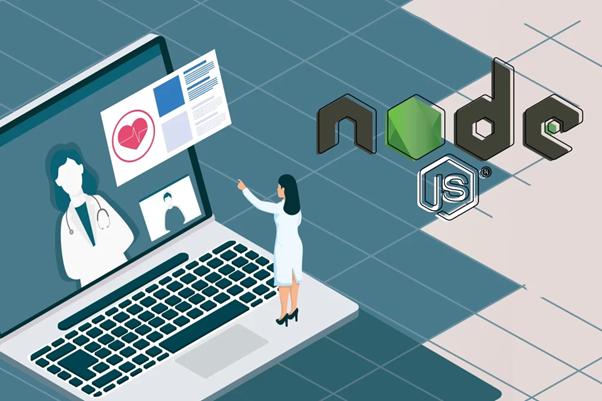The Best Technology Platform for Developing mHealth Applications: Why Node.js in 2023?
One of the most interesting trends in contemporary medicine and digital healthcare is the growth of the mobile health (mHealth) sector. MHealth applications are gaining popularity as more individuals take charge of their health and well-being and are used to check vitals, monitor activities, and aid in the diagnosis of medical issues.
Do you intend to create a mobile health application? If so, you should research the Node Js technology platform. It is the perfect option for rapidly and simply creating mHealth apps because of its speed, scalability, and performance attributes.
The Best Technology Platform for Developing mHealth Applications: Why Node.js?
JavaScript-Based
JavaScript, which is popular in online and mobile development, is the foundation of Node.js. As a result, programmers are able to utilize a single language for the full application stack, from the front end to the back end, for example, this company: https://academysmart.com/technologies/node-js-development-company/. Developers can work on the client side and server side of the application more effectively if they are familiar with JavaScript.
I/O that is Asynchronous and Non-Blocking
Node.js is built to effectively manage lots of concurrent connections. Because it employs an event-driven, non-blocking I/O approach, it can process several requests concurrently without obstructing other processes.
Scalability
Node.js is renowned for its ability to scale. Compared to conventional server-side technology, it can manage many concurrent connections with minimal resources. This qualifies it for mHealth applications that may see traffic peaks or need to accommodate a growing user base.
Rich Ecosystem Ecopackage
The npm (Node Package Manager) repository hosts a large ecosystem of open-source Node.js programs. These packages provide a broad selection of modules and functions that are simple to incorporate into mHealth apps, saving time and effort during development.
Architecture for Microservices
The ability to create microservices-based architectures using Node.js is advantageous for the development of sophisticated mHealth apps. Developers may improve the application's scalability, maintainability, and deployment flexibility by dividing it into smaller, independent services.
Instantaneous Communication
Due to its event-driven architecture and accessibility of libraries, Node.js performs very well in real-time communication situations. Node.js is an effective tool for handling the bidirectional connection between clients and servers in mHealth apps that need features like real-time alerts, messaging, or live chat.
Community and Assistance
The huge and vibrant developer community around Node.js has produced a wealth of tutorials, support materials, and documentation. Because Node.js is so community-driven, developers may easily access solutions, frameworks, and best practices for creating mHealth apps.
A Four-Step Method for Recruiting Node.js
Definition of Job Analysis and Requirements
- Perform a comprehensive examination of the project specifications, taking into account the healthcare industry and any unique technological requirements.
- Define the position's responsibilities, duties, and necessary qualifications, including familiarity with healthcare data, electronic health records (EHR), HIPAA compliance, and applicable technologies like Node.js, frameworks, and databases.
Screening and Sourcing
- Promote the position through a variety of platforms, including job sites, business networks, and developer communities.
- Examine resumes and applications to narrow the field of applicants to those who fit the criteria.
- Conduct preliminary screenings, such as phone or video interviews, to gauge applicants' technical proficiency, work history, and comprehension of the difficulties in the healthcare industry.
Technical Assessment
- Conduct technical tests or coding challenges to gauge applicants' knowledge of healthcare-related ideas, competency with Node.js, and problem-solving abilities.
- If you want to evaluate a candidate's aptitude for handling real-world situations and the quality of their code, think about using extra assessment techniques like code reviews, portfolio evaluations, or live coding sessions.
Interviews and Decisions at the End
- Conduct in-depth interviews with the applicants who made the shortlist to evaluate their cultural fit, communication abilities, and capacity for productive collaboration.
- Include questions that are relevant to the healthcare industry to test respondents' knowledge of privacy laws, healthcare data management standards, and mHealth development best practices.
- To get a variety of viewpoints, think about including additional stakeholders in the final interview process, such as project managers or medical experts.
- Before deciding to hire the Node.js developer(s), consider all factors, such as technical aptitude, cultural fit, and subject matter expertise.
Conclusion
Need an efficient mHealth solution to bridge the communication gap between patients and doctors? Utilize Node Js development services from an app development business, a cost-efficient, scalable technology that offers a top-notch user experience for online and mobile apps that the healthcare sector requires.

